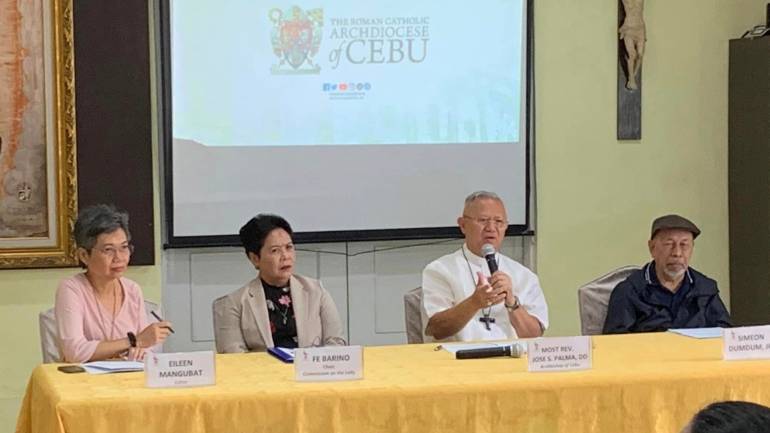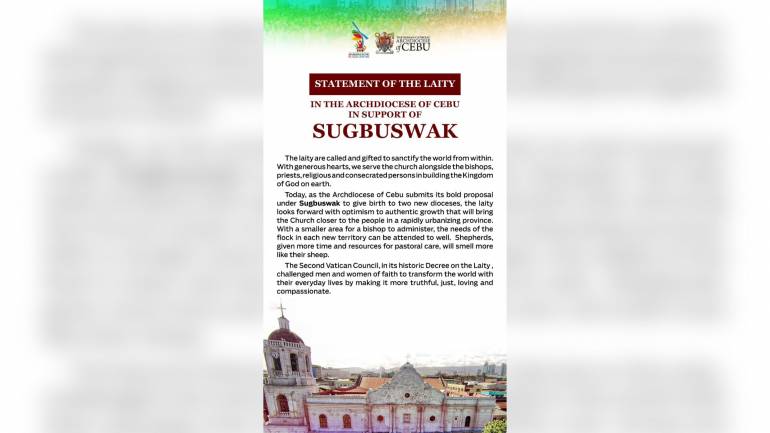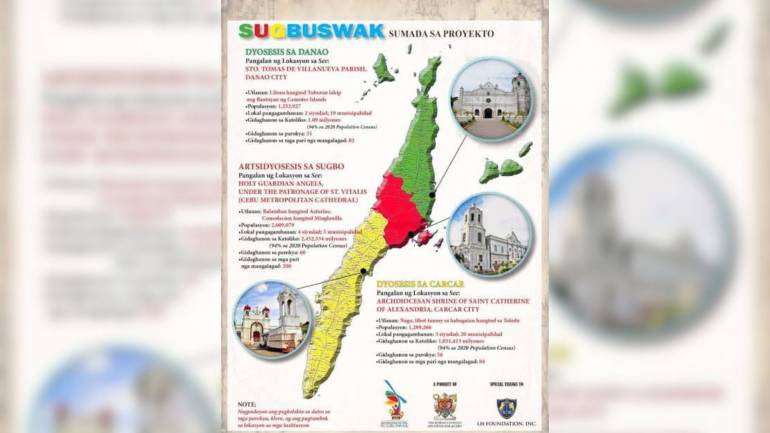Pope Seen to greenlight a proposal to create two new Cebu dioceses, says Archbishop Palma
Cebu Archbishop Jose Palma is almost certain that Rome would approve the plan to create two new dioceses in the rapidly urbanizing Cebu province with a Catholic population of more than 4 million during a news conference on February 14 in Cebu, Philippines.
With the Catholic Bishops Conference of the Philippines (CBCP) approval for “Sugbuswak” under his belt, Archbishop Palma and other CBCP leaders are set to formally present the proposal to Rome on March 11, 2024.
“Sugbuswak” refers to the proposal to create two new dioceses in the existing Cebu Archdiocese. The word is a coinage from “Sugbu,” referring to Cebu, and “buswak,” meaning to bloom.
According to the plan, a daughter diocese will be established in the south, with its headquarters in Carcar City's Archdiocesan Shrine of St. Catherine of Alexandria in Carcar City. There are 56 parishes spread over three cities and 20 municipalities. The Catholic population is estimated at over 1.21 million.
In the north, a daughter diocese will be based in Santo Tomas de Villanueva Parish, Danao City. It was established in 1671 and is one of the oldest parishes in the Philippines. There are 51 parishes spread over two cities and 19 municipalities. The Catholic population is pegged at 1.09 million.
Besides announcing his trip to Rome during a news conference last week after celebrating Ash Wednesday Mass, Archbishop Palma also disclosed that he is set to meet the papal nuncio this week.
The Archdiocesan Commission on the Laity organized a press conference to formally present a signed statement of support for Sugbuswak.
The so-called Statement of the Laity on Sugbuswak contains 18 key points gathered by church workers and volunteers in a series of consultations, online surveys, and face-to-face interviews in a bid to get the faithful’s sentiments on Sugbuswak.
Ms. Fe Barino presented the document on behalf of the Commission on the Laity, the network of Lay Organisations, Movements, Associations, and Services (LOMAS), and the drafting committee, which processed the feedback of close to 500 respondents who were interviewed over the past four months, from September up to December 2023.
Among other things, the 18 key points cover organizational, administrative, and financial concerns for the new dioceses, a new system for remunerations for priests, programs for the poor, programs for the youth, and a single plan to unify and guide the two new territories.
According to Ms. Eileen Mangubat, former publisher of a community paper and currently an independent editor who anchored the drafting committee, “The heart and soul of the statement of the laity is the call for the baptized to play an active role in the life of the Church and particularly now when the biggest reorganization of the Catholic Church in Cebu is taking place as we speak.”
Archbishop Palma thanked the laity for making every effort to consult with the faithful on Sugbuswak.
“Sugbuswak happened after the Philippines celebrated 500 years of Christianity, survived the COVID-19 pandemic, and experienced a number of disastrous natural calamities,” Palma said.
He emphasized that the backdrop of the work behind Sugbuswak resembles Pope Francis' reflections in his book, "Let Us Dream."
In the book subtitled “The Path to a Better Future,” Pope Francis talks about the crisis spawned by the global pandemic, wars in many parts of the world, hunger, climate change, and social inequalities that prey on the poor and marginalized.
Citing the book, he said, “From this crisis, we can come out better or worse. We can slide backward, or we can create something new. For now, what we need is the chance to change and make space for the new things we need. It’s like God says to Isaiah, Come, let us talk this over. If you are ready to listen, we will have a great future. But if you refuse to listen, you’ll be devoured by the sword (Isaiah 1:18–20).”
Palma said that from the book’s perspective, “The Pope invites us to look back, to look at our present situation, and to continue the journey.”
“Sugbuswak is like that. We look back to the past of the Church in Cebu, try to prayerfully discern our present situation, and continue the journey in the future.”
In the context of the proposal, the Pope is saying, “It’s about time that we see with a new vision. The fact that we survived and are now in this time means that, as we look back, there should be a new way of looking at reality.”
Palma stressed that he prefers to see the 18 key points presented by the laity in light of the Pope’s challenge:
“We aspire, we prepare, and we dare to dream.” - Malou Guanzon-Apalisok
Radio Veritas Asia (RVA), a media platform of the Catholic Church, aims to share Christ. RVA started in 1969 as a continental Catholic radio station to serve Asian countries in their respective local language, thus earning the tag “the Voice of Asian Christianity.” Responding to the emerging context, RVA embraced media platforms to connect with the global Asian audience via its 21 language websites and various social media platforms.

















